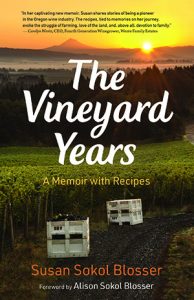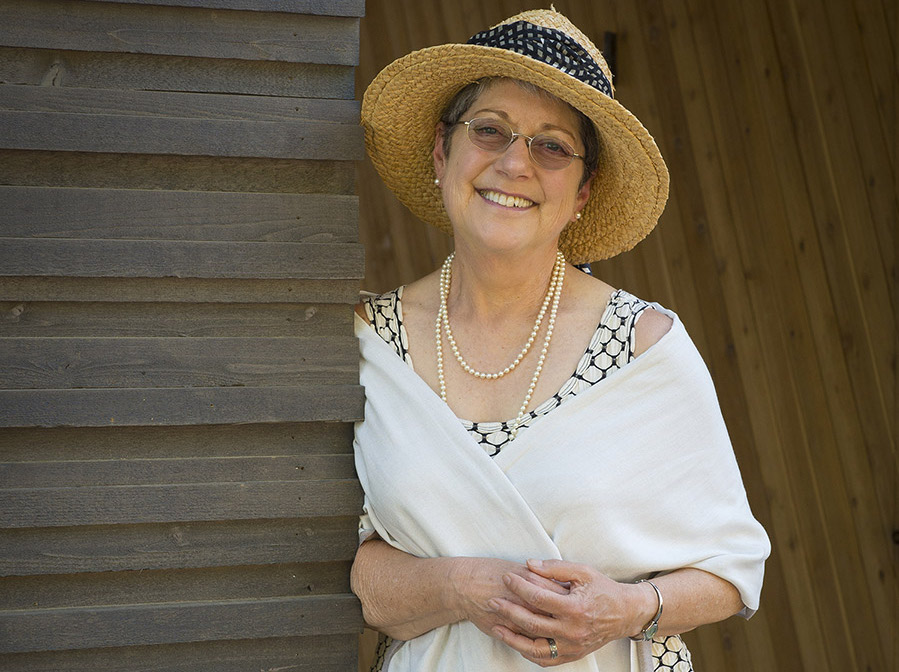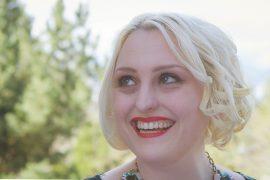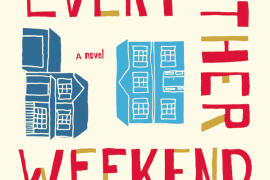Oregon Author Susan Sokol Blosser’s talks about her new book, The Vineyard Years
interview by Sheila G. Miller
Susan Sokol Blosser is a pioneer of the Oregon wine industry, running a business and making great wine back when women weren’t encouraged to do much of either. For more than three decades until she gave up her role as president in 2007, she built Sokol Blosser from a grand farming experiment into one of the most renowned vineyards in Oregon and beyond. In her new book, The Vineyard Years, she shares how running the family business was so much more—full of challenges, joy and a lot of mac-and-cheese dinners.

You had already written about your experience starting Sokol Blosser in At Home in the Vineyard. What inspired you to take a second look?
At Home in the Vineyard came out in 2006, and it took a look at the earliest years up to 2003. That book is now out of print, so my daughter, Alison, who is now running the winery, said we ought to reprint that because people are interested in what the early years of the Oregon wine industry were like. There’s not many people left who can tell that story. We thought about that, and then I thought, ‘Well, if I’m going to do that, I ought to update it and bring it up to 2016.’ That ended up changing the whole concept, because it wasn’t just retelling the story or adding on to what was there. It was really retelling the story with the perspective of age, and sort of looking back as well as updating.
How did you end up adding so many (delicious) recipes?
My editor suggested, ‘Why don’t you give it a culinary theme? Why not include some recipes? Don’t you have food memories?’ That was just like a lightbulb—food and wine, that’s what it’s all about. I really had fun matching the recipes to the story. They’re kind of woven into the text. It’s not a cookbook—there are no glossy photos of food. They’re things that meant a lot to us. A good example is Nick’s Minestrone from his cafe. His cafe was so important to Bill and me as we were starting the winery. It was the reward we would give ourselves—we tried to go once a month.
How do you balance a memoir’s honesty with your desire not to upset family, especially when you’re in a family business?
That really comes to the heart of everything. I chose what I was willing to be open and honest about, and there were a number of things that I was willing to share. For example, how it was to choose the next president of the winery. That was a really difficult position because Alex and Alison, who both were working for the winery, each wanted to be president. The story of that is pretty complete and pretty honest. Also, my decision to give up control of the winery and enter a transition plan is pretty open and honest, and the reason for that was because I wanted people to know, first, that it’s important for the business to face your limitations and secondly, that it’s possible to do that and feel good about it. This isn’t a marketing book. It’s an attempt to really tell the inside story of what it’s like to run a family business. I didn’t gloss over anything.
I thought it was neat that you allowed sidebars from family and others you talk about, who sometimes offer different thoughts on the story you’re telling.
That was to try to include others’ perspectives, because we see the world differently. That was a fun piece—there are other people’s voices included in the recipes and in the sidebars. I think that was really important. Each of those was an important addition.
What do you hope readers walk away with?
I hope this book gives readers an insight into the closeness to nature that having a vineyard entailed. People look at it as glamorous but I was really a farmer, and what is important to me and what I love about being in the wine business was the sense of place, the closeness to nature that having a vineyard and working in it every day gave me, so that’s one thing. To see the joy, as well as the challenges of a family business, and also of the wine industry and just to get a sense of a profession that is really dedicated to the enjoyment of eating and drinking well, if people get any of that, I will be happy. We want it to look effortless—you see a ballet dancer float across the floor and do these incredible turns and leaps, but what you don’t see is the incredible hard work that goes into making it look effortless. We want it to look effortless, and behind the scenes there’s a lot. That’s what I try to tell in the book—here’s what is really going on.









